Radko Tichavsky is a Czech born Mexican Agrohomeopath. He is a co-founder and director of Instituto Comenius in Mexico and author of Handbook of Agrohomeopathy, 2007 (Spanish) and Homeopathy for Plants, 2009 (Spanish) and creator and teacher of Holohomeopathy.
Agrohomeopathy Course!
Radko Tichavskyi is now offering a one semester virtual course in Agrohomeopathy (in English). You can learn how to define and analyze holons and how to repertorize the specific homeopathic treatment beyond just disease or pest names. You can find out more here: www.icomenius.edu.mx
A Materia Medica and Repertory for Plants: Mark Moodie hosts the website “Considera”, which provides a growing M.M and Repertory for plants and discusses resources for biodynamics and Agrohomeopathy .The website allows the world community to contribute their experiences in planting.
Dear Mr. Tichavsky,
Red Rot of Sugarcane has attacked our crops in the past. It is due to a fungus called Glomerella tucumanensis ( or Colletotrichum falcatum). There is a dull red color interspersed with whitish patches across the stalk. The crown dries up and drops down. We are in Alirajpur, in Madhya Pradesh, India (Pincode: 457887 ) The summers are hot (up to 45 0 C) and then in October the monsoon rains start. Can you make any suggestions for preventing it?
Thank you
Rahul Bhagat
Radko Tichavsky:
Dear Rahul,
First of all you have to consider the rotation of cane crops, for example with the rice. This is a good alternative to reduce the incidence of this fungus pathogen in cane crops, and adding some Silicea on the soil. Also, you can consider the modification of the date of sowing the crops, to avoid climate with high temperatures. The presence of the fungus is due to the combinations of monocultive agriculture, and temperature stress, which are causes of low production of peroxidase in the plant. There are some varieties of cane more susceptible to Glomerella sp. and others more resistant. The homeopathic treatment consists of application of Raphanus sativus 6 CH. The mother tincture of the radish root in this case has to be prepared in acetone (half volume of the acetone volume, and half volume of root of the radish), left for a week to mature and then proceed to centesimal Hahnemannian dynamization in water up to 6 CH potency. The application has to be made on the same day the dynamization is made. It is applied every two weeks, sprayed on the leaf part of the cane until the problem disappears. You can also use Ricinus communis 6 CH (made from leaves), Valeriana 6 CH (made of roots), Tropaelum mayus 6 CH (made from leaves) or Acacia nilotica 6 CH (made from leaves). All mother tinctures for this remedy must be done in acetone, and the dynamizations in water, applying the remedy the same day of the elaboration of the dynamization. It is good to vary the homeopathic remedies during the year (do not always apply the same one) to prevent the fungus from becoming resistant to the treatments. You can also apply sap of Opuntia ficus-indica 6 CH sprayed (the mother tincture is prepared in alcohol) as a sunscreen and to reduce stress from high temperatures and provide better vital comfort to your plants.
Dear sir,
I am located in Nagpur city, Maharashtra state (India). Average temperature is minimum 27 degree and maximum 46 degrees Celsius. Average normal rainfall is 1007.3 mm. I grow pomegranate plants, but not all the plants are not flowering each year. Only 70% of the trees flower. Only 60% flowers are female flowers. I don’t get a harvest every year. Can you suggest any way to improve this?
Thank you
Vaibhav Padgilwar
Radko Tichavsky:
Dear Vaibhav,
The pomegranate can have from 3 to 9 periods of flowering during the year. The fruit production can be increased, eliminating the late flowers, which appear at the end of the season. Late flowers and fruits in pomegranate decrease or even completely inhibit the formation of fruits in the following cycle and the first fruits always have best quality. It is also important not to allow, once the fruits are formed, that there are more than two fruits together. It is necessary to perform thinning (pruning) of fruits and also twice a year a moderate pruning of branches must be done (green with leaves) that permits access to the sun and stimulates the hormonal production of the plants.
Apply twice per cycle and one week apart: Sepia succus 6 CH, Urtica dioica 6 CH and Phosphorus 12 CH sprayed with sap of Opuntia ficus-indica as adjuvant. Leave only a few male flowers per tree at the beginning of the productive season (male flowers usually appear first); during the flowering eliminate the irrigation completely. Prepare bionosode of male flowers (with mother tincture in alcohol) and dynamized to 30 CH potency. Apply it only once per year, at the beginning of flowering. In this way a hormonal balance will be established in the plant, fertility is renewed, and the trees will produce correctly and regularly during the future vital cycles.
Dear Mr. Tichavsky,
We had a problem with our cucumber crop last summer. It was invaded by Cucumber Beetles, the striped variety called Acalymma vittatum. They fed on the fruit and flowers. We live in Berryville, Arkansas (USA) Zipcode: 72616. The weather is moderate and so is the rainfall. Is there something we can do to stop it from happening again?
Thank you
Mark Goldberg
Radko Tichavsky:
Dear Mark,
The attacks of the Diabrotica sp. (in the image you show this one) and Acalymmma sp. are the response of nature to the fragmentations in the holon. I send you processed a satellite image of your town (below). The white areas are very fragmented, the red ones are medium fragmented and the dark green ones have a high degree of integration and vitality. So you can locate where your crop is and predict the frequency and intensity of biotic problems in your crops. Fence off a dark green area, or even the connection with them increases the vitality of your plants and the proximity of white and red areas on the contrary, diminishes the vitality.
For the treatment of Diabrotica sp. and Acalymma sp. symphtom we use Larrea tridentata 6 CH with sap of Opuntia ficus-indica or olive oil as adjuvant. Put 100 ml of sap or olive oil for each 20 liters of homeopathic remedy. Additionally you can use nosode of the soil 4 CH made in physiological serum (without using alcohol) sprayed on leafs.
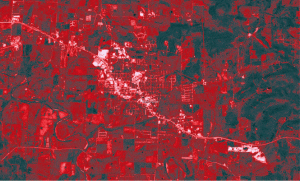
Analysis of fragmentation in the Berryville area



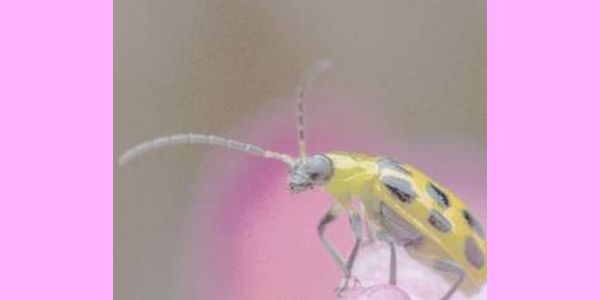
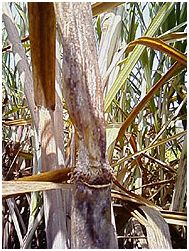
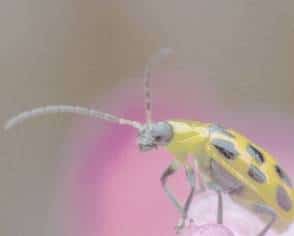
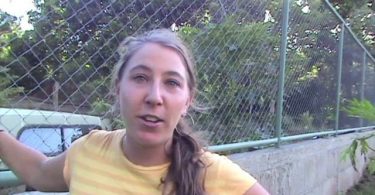

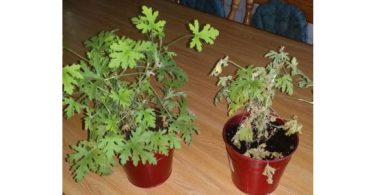
Dear Tichavsky,
Although You and your team is doing research in Agrohomeopathy ,but it always remained in papers only and farmers has failed to take its benefit ,due to the reasons that no extension work is there.Books are very costly and are not easily available ,and are too costly.More over a number of countries has declared homeopathy as a junk science.How it will be possible to make it popular among the farmers.Although farmers has make up their mind to give up use of chemical fertilizers in India and are keen to follow Organic farming ,but it is their compulsion to use chemical fertilizers.I am M.Sc Agriculture of 1976 batch,a former seed technologist with an experience of 40 years ,and using Homeopathy from the last 30 years.Have conducted a number of Agrohomeopathy trials in field crops as well as on Protected cultivation.
Kindly try to have your Agrohomeopathy Consultants in India and in other countries too.but from the Agriculture technocrats only.My website http://www.josanagroconsultant.com ,is already in functional and I am connected with the World via LInkedin.com,Facebook.com etc.
With regards,
Dr Balbir Singh Josan
[email protected],
919463988778 WS
LUDHIANA ,Punjab INDIa